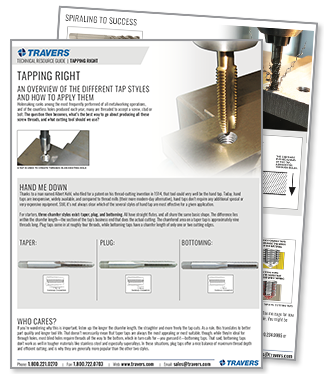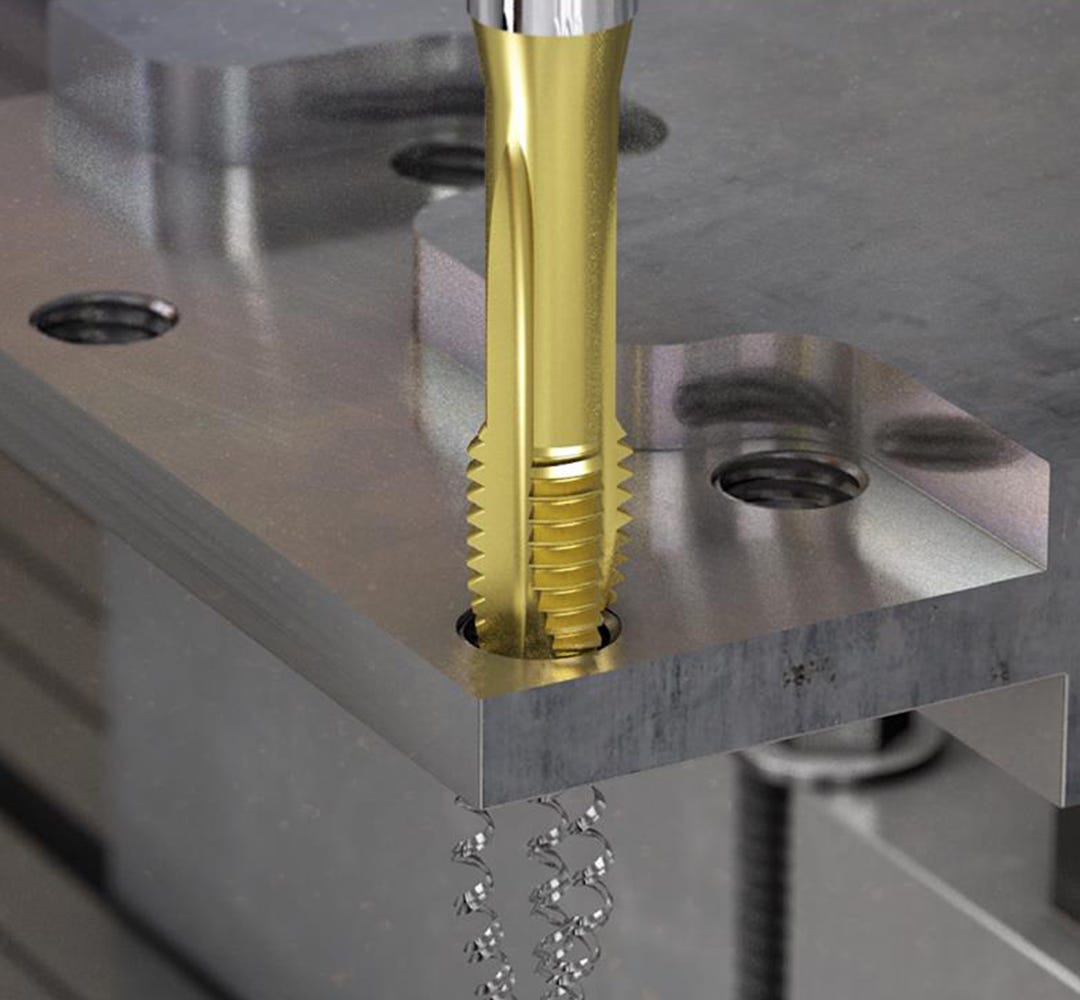


As a starting point, however, 55 for maximum drill size and 75 for minimum drill size can be used as a guide. The spiral grooves transport the chips out of the drill hole upwards, which prevents the chips from clogging the grooves. There is no true method of predicting percent of thread that will be obtained when tapping with forming taps due to the many variables involved. Taps with right-hand spiral grooves are particularly suitable for blind holes. The chips are removed in the cutting direction. The chip removal of these tap types takes place below the hole. Taps with left-hand spiral grooves are suitable for through holes. Taps with straight flutes are not suitable for deep threads as there is hardly any chip evacuation.ĭetailed view: Tap grooves (spiral groove) of a machine tapĪ distinction is made between taps with left-hand twisted and right-hand twisted spiral grooves: Left-hand spiral grooves on taps

Straight fluted taps can have the form A, C, D or E. They are suitable for both through and blind holes. Universally applicable, mainly for short-chipping steel and cast iron, they form the basis of the taps. Taps with straight groove are the most commonly used taps. All flute shapes can be found on both cut-in taps and machine taps.ĭifferent tap grooves: Spiral groove, straight fluted with peel point and straight fluted In hand tap sets, all taps are straight fluted. A flute can have different shapes designed for its use, which can cause the material removed to be ejected in a different way. A groove on taps is required to make room for material removal during tapping.


 0 kommentar(er)
0 kommentar(er)
